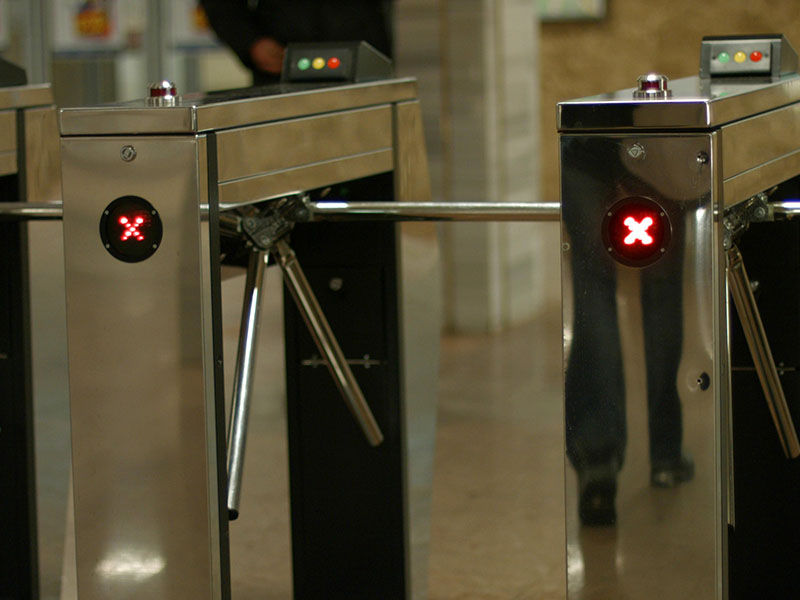
Seeking effective access control solutions? Turnstile barriers gates are a go-to choice for security and crowd management. This article breaks down their functions, types, and how to choose one that aligns with your specific needs—ensuring you’re well-informed for making the right decision.
Turnstile barrier gates enhance efficiency and security for access control by using rotating arms to allow access only to individuals with valid credentials, and can be automated for reduced manual operation and simple maintenance.
Various types of Turnstile barrier gates, including tripod, full-height, optical, swing, and flap barriers, offer a multitude of benefits such as robust physical security, crowd control, seamless integration with other security systems, and are customizable to meet specific needs and compliance requirements.
Selection of the appropriate turnstile barrier should consider factors like traffic volume, space constraints, and accessibility requirements, with regular maintenance and troubleshooting to ensure longevity and optimal performance.
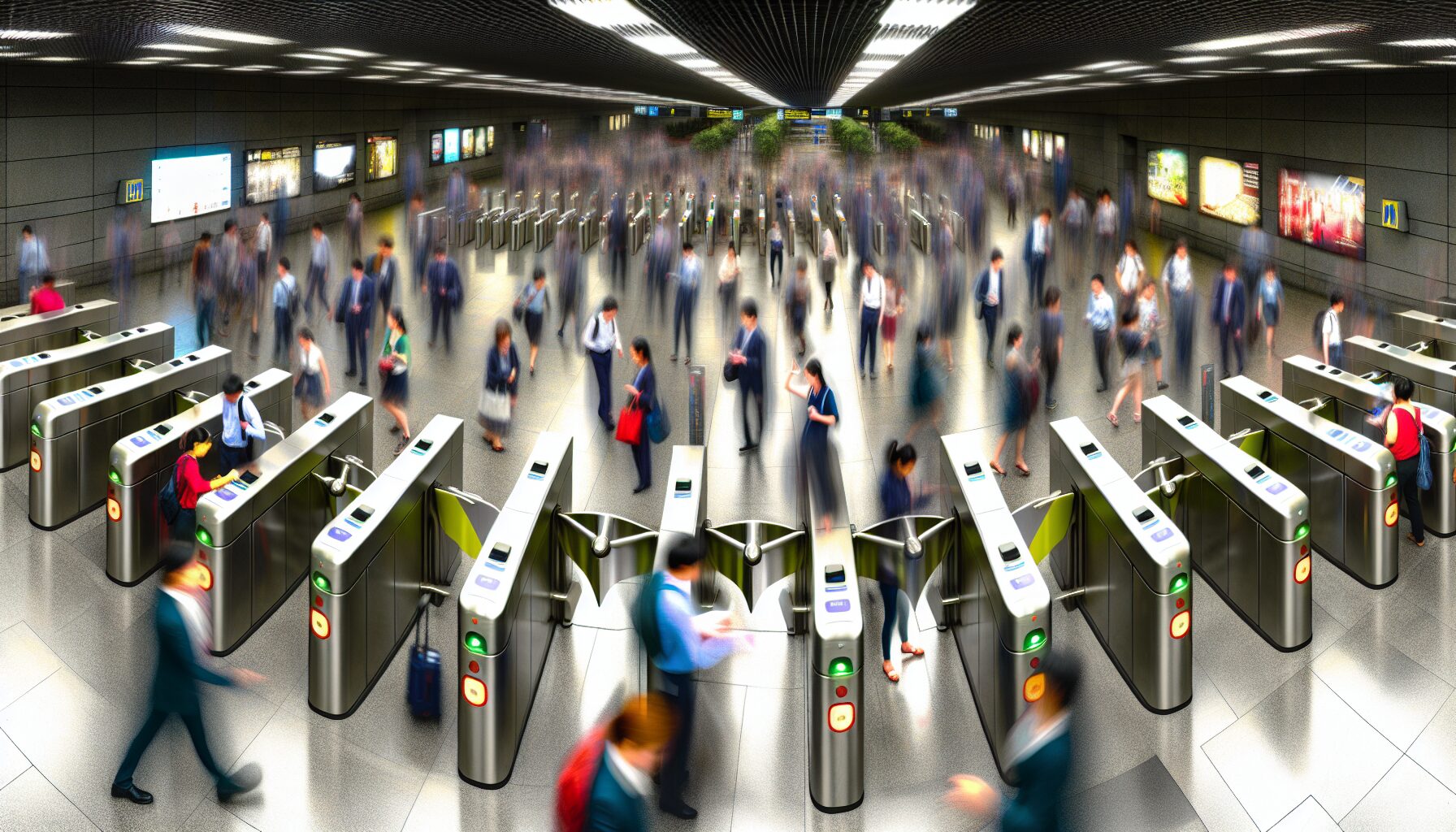
Security Turnstile gates, sophisticated access control systems, are designed to boost management efficiency and accuracy. They effectively tackle issues like:
high labor costs
lengthy processes
inefficiency
imprecise judgment
By using rotating arms, they grant access to individuals who present valid credentials or tickets, thus barring unauthorized entry.
For instance, Macrosafe security turnstile gates are automated, which removes the need for manual operation and requires simple routine maintenance.
Rotary gates grant or deny access based on the presentation of authorized credentials, rotating or swinging according to the security system’s configurations. Macrosafe turnstile Obstacles, for example, are equipped with a servo control system and DSP+ARM motor control technology to guarantee precise and seamless movement of the turnstile arms or gates, including swing turnstile gates.
The various types of authorization credentials utilized in rotary gates, including flap barrier gates, comprise of ID cards, key fobs, and other similar credentials.
There are several types of security turnstiles including tripod, full-height, waist-high, optical turnstiles, swing, and flap barriers. Tripod turnstiles are comprised of a central pole and three rotating arms, making them suitable for low-traffic areas and enabling one-person-at-a-time entry.
Full-height turnstiles, on the other hand, are similar to revolving doors and are frequently utilized in high-security locations such as government facilities.
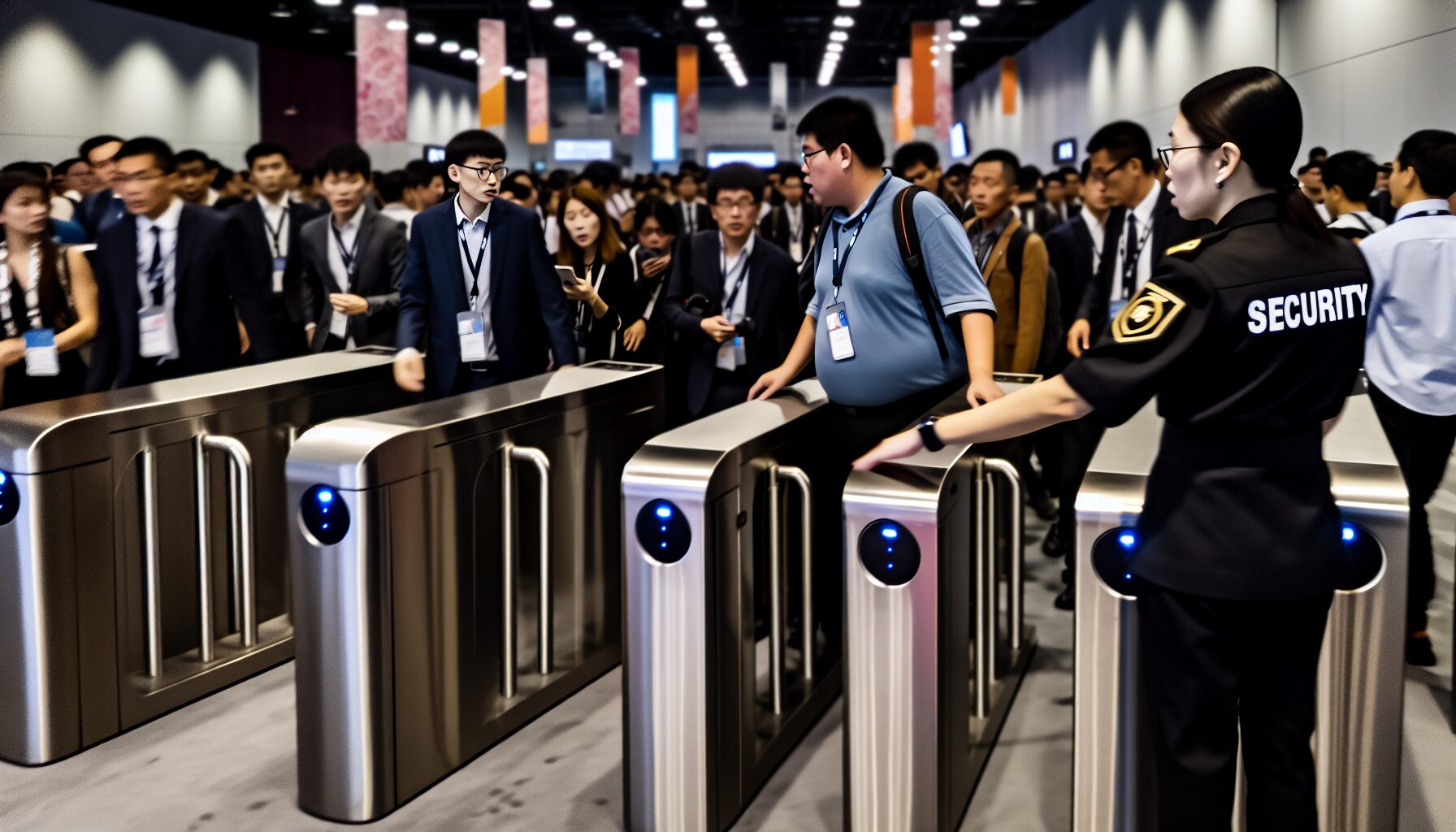
Turnstile Obstacles provide a multitude of benefits, including:
Contributing to security in a setup by restricting access to authorized personnel
Serving as a robust physical security barrier
Offering an additional layer of security to perimeter protection measures
Playing a crucial role in crowd control by regulating the movement of individuals entering and exiting a location, thereby averting overcrowding and reducing the potential for hazardous scenarios.
Turnstile Obstacles offer a robust physical barrier with solid steel arms or thick glass panes, effectively deterring unauthorized entry and bolstering security measures to mitigate the risk of intrusion in business premises or venues. They are effective in:
reducing theft incidents by acting as a physical deterrent
delaying unauthorized access, thereby giving security guards more time to detect and intervene
leading to a reduction in theft incidents.
Additionally, they can be seamlessly integrated with other security systems such as:
facility access control
visitor management systems
video intercom systems
This integration results in a comprehensive security solution.
Turnstile Obstacles function as physical barriers, enabling entry for only one person at a time, thereby providing several layers of security and assisting in managing the movement of individuals in high-traffic locations. They ensure orderly passage by implementing a one-at-a-time passage system and utilizing advanced detection features to identify and deny access to unauthorized individuals.
By controlling the entry and exit of people, they help minimize the risk of stampedes and overcrowding in busy areas.
Turnstile Obstacles can be effectively integrated with other security systems, including video surveillance and biometric scanners, to establish a comprehensive access control system that improves security and operational effectiveness.
When a turnstile barrier is integrated with a video surveillance system, it facilitates controlled access by permitting entry solely to individuals authorized by the access management system, thereby enhancing security by capturing the precise identities, timings, and locations of all individuals passing through.
The selection of the appropriate turnstile barrier is pivotal to cater to your unique needs. To ensure the optimal fit, consider factors like traffic volume, space limitations, and accessibility requirements.
Given that it determines the suitable turnstile type and configuration necessary for effective crowd management and minimal delays, assessing the anticipated traffic volume is extremely important.
The selection of the right type and configuration of the turnstile barrier heavily depends on traffic volume. The volume of traffic in different environments is affected by a range of factors including:
Environmental conditions
Vehicle characteristics
Driver behavior and traits
Income levels
Population densities
Workplace locations
In environments with heavy traffic flow, it is crucial to choose a turnstile model that can efficiently handle the volume while maintaining smooth flow, like full-height turnstiles.
Space constraints are another key consideration when choosing a turnstile barrier. It is essential to ensure that the selected turnstile barrier can fit within the available area without compromising its functionality. For example, full-height rotary gates typically require an opening width of 28.75 inches and a gate height of 81.9 inches.
On the other hand, tripod rotary gates have an overall height of 38.6”, width of 29.5”, and total depth of 43.3”.
When selecting a turnstile barrier, it is essential to meet accessibility requirements for disabled users for compliance with relevant regulations and to guarantee equal access for all users. For instance, the ADA specifies that turnstile Obstacles must have a clear opening width of at least 32 inches to accommodate individuals using wheelchairs or crutches.
Additionally, rotary gates should be designed to eliminate architectural barriers and comply with accessibility guidelines for public accommodation and commercial facilities.
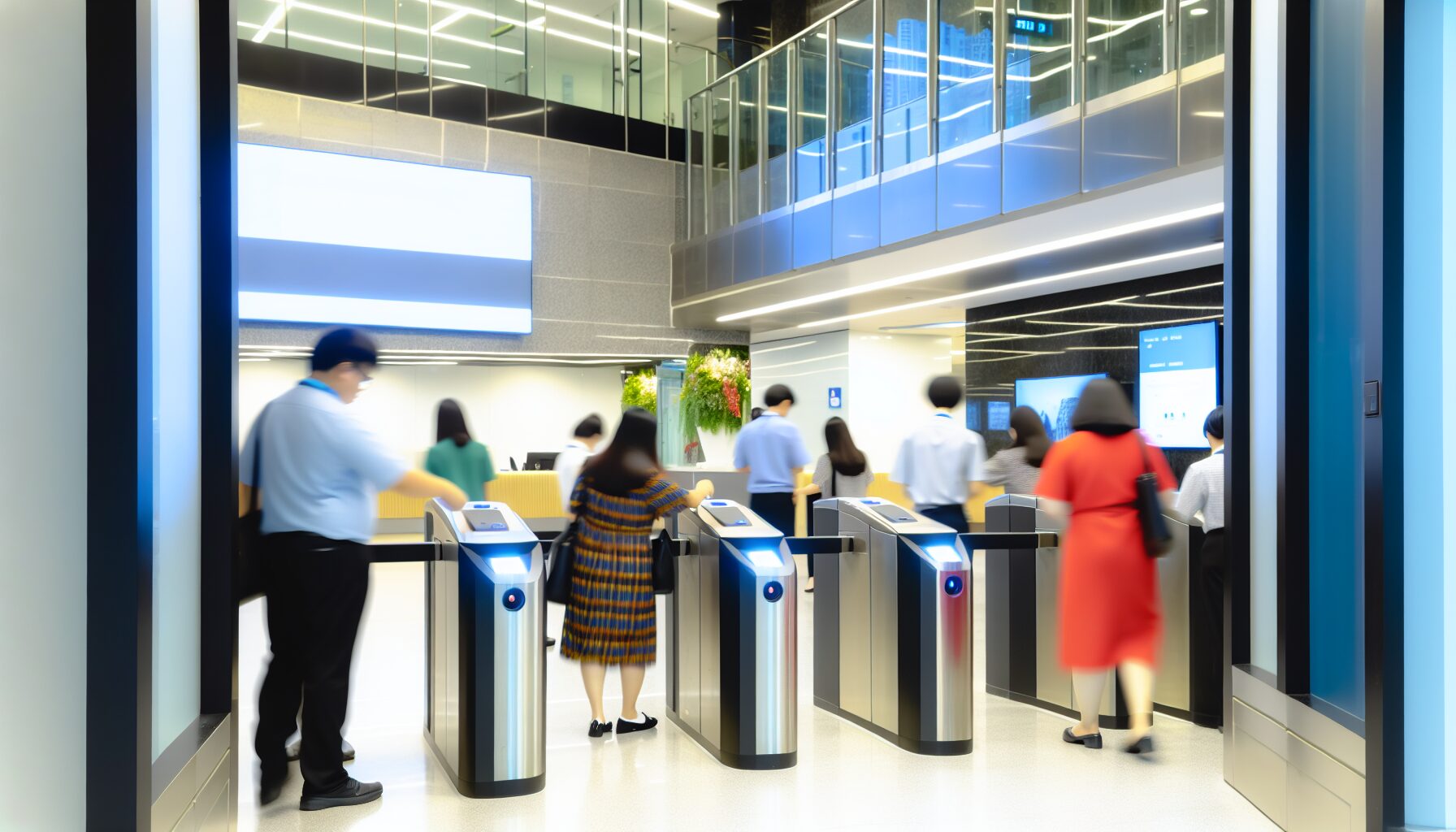
Rotary gates have diverse applications across various industries, including:
Public transportation hubs, to manage access and regulate the movement of individuals. They are designed to allow only authorized ticket holders to enter or exit the transportation area, deter fare evasion, and uphold order and security.
Business premises, to control access to restricted areas and ensure only authorized personnel can enter.
Entertainment venues, to manage crowd flow and prevent unauthorized entry.
These security turnstile gate barriers, including swing barrier gates, help enhance security and improve the overall efficiency of these spaces.
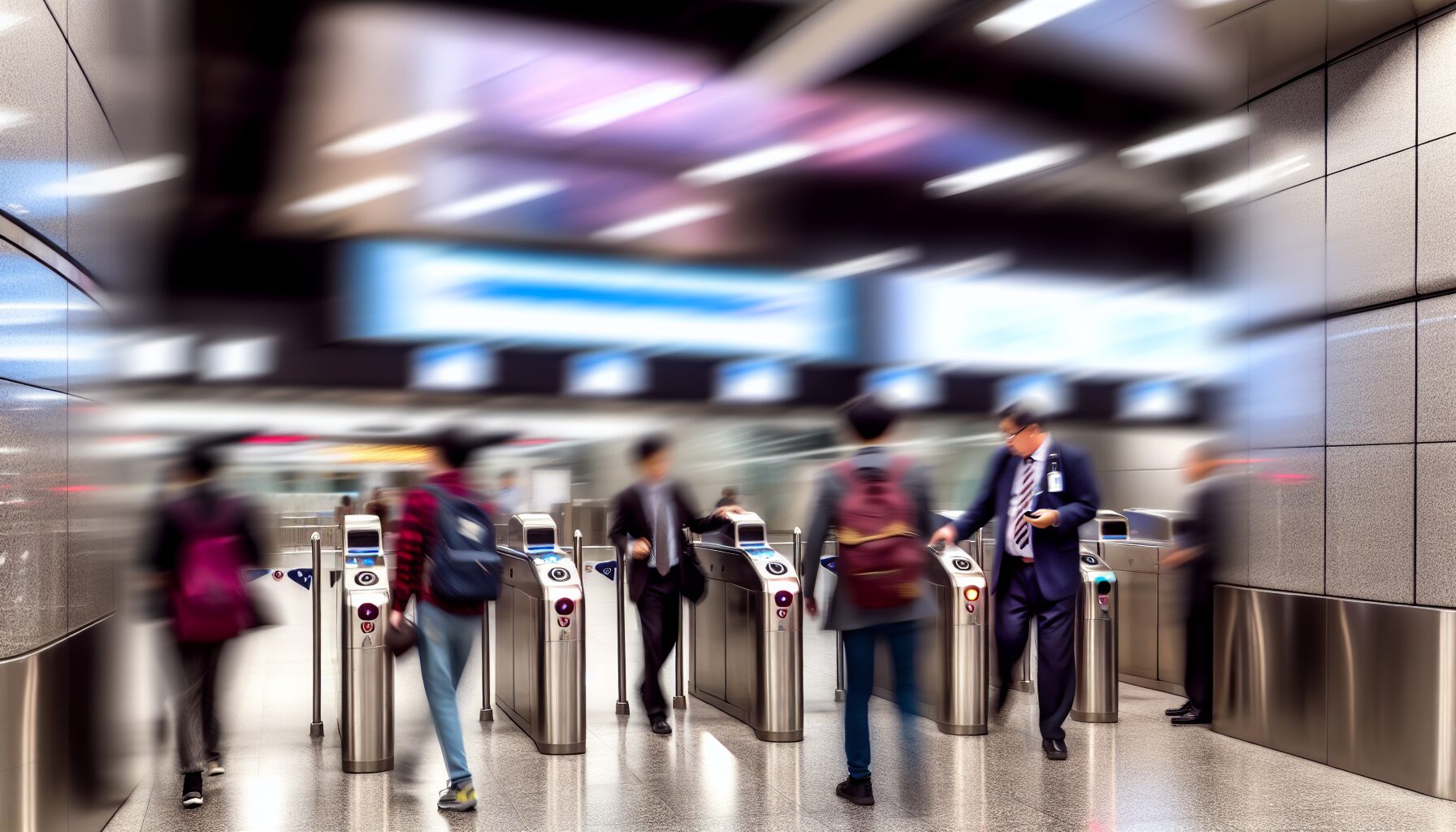
In public transportation hubs, rotary gates are instrumental in managing access and controlling the flow of individuals. They provide a robust physical barrier that helps prevent unauthorized access, thereby contributing to overall security.
A recommended type of turnstile barrier for public transportation hubs, including high speed railway stations, is the tripod turnstile gate, which can be an alternative to a flap barrier gate or a turnstile barrier gate.
In business premises and office spaces, rotary gates are key to enhancing security by restricting unauthorized access. Frequently utilized types of turnstile obstacles in commercial and office environments include:
Tripod turnstiles
Swing turnstiles
Flap barriers
Full height turnstiles
Sliding turnstiles
Speed gates
Waist-high turnstiles
Optical barriers
Drop arm or tripod turnstiles
They play a vital role in safeguarding sensitive areas within commercial settings that necessitate controlled access, such as entrances and exits of buildings with a high influx of visitors.
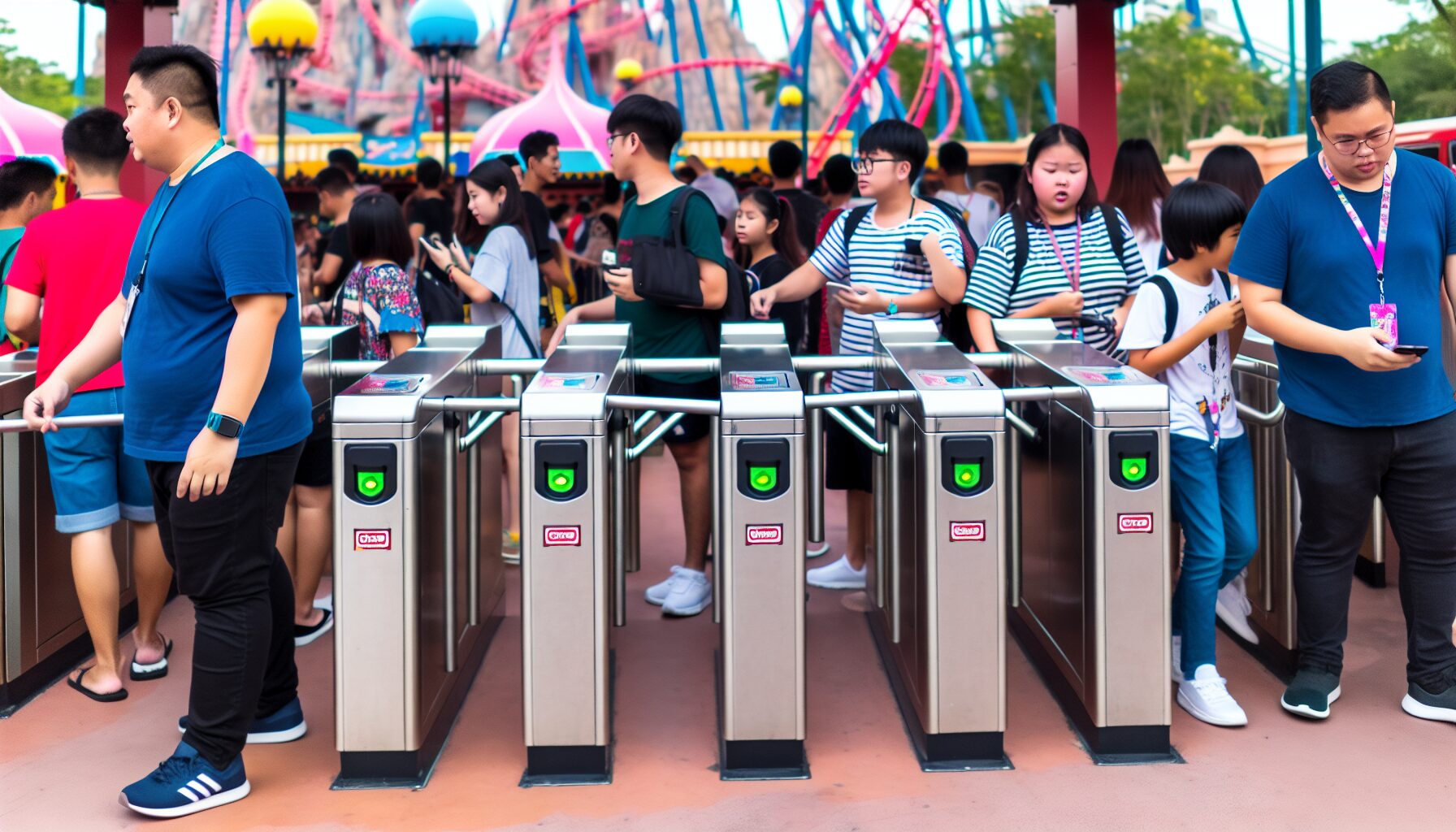
Last but not least, entertainment facilities and attractions utilize rotary gates for ticket management, crowd control, and revenue protection. They implement a single-file entry system, efficiently manage queues, deter line-cutting or overcrowding, and promote a fair and organized waiting experience for individuals.
They also contribute to revenue protection by providing secure ticket verification, managing entry, ensuring that each entrant is accounted for, and preventing ticket fraud or unauthorized access.
Turnstile barrier management heavily relies on maintenance and troubleshooting. Regular maintenance and troubleshooting of turnstile obstacles ensure optimal performance and longevity.
A prevalent issue in rotary gates is pedestrians resisting the rotating rod while swiping the card or checking the ticket. This can be resolved by instructing pedestrians to step back before entering.
To maintain the functionality and aesthetic of rotary gates, regular inspections and cleaning are imperative. Here are the steps to follow for a weekly inspection:
Remove side panels to inspect for dust and debris.
Check for loose screws and tighten if necessary.
Clean the gate thoroughly.
Lubricate moving parts.
Conduct a visual inspection for physical damage or wear and tear.
Check mechanical components for proper functioning.
By following these steps, you can ensure that your turnstile Obstacles are in optimal condition.
Cleaning involves:
Removing side panels to check for dust and debris
Cleaning printed circuit boards and cable assemblies
Performing preventive maintenance
Disinfecting surfaces
Regularly cleaning the gate utilizing a soft cloth with a high-quality stainless steel cleaner for metal parts
Using a corrosion-free detergent for marble and glass parts.
Turnstile barrier often face challenges like issues with signal indicators, refusal of entry post card swipe or ticket scan, and erratic swinging of the turntable. Mechanical issues can be identified by observing non-functional signal indicators and counters, checking for loose screws between turnstile components, and inspecting for visible physical damage or wear and tear.
To address these issues, follow these procedures:
Open the machine cover.
Adjust the screws of the drop bar device.
Ensure that the turnstile arm isn’t stuck.
Remove any surface dust.
Cut off the power supply.
Check the parts for proper function and signs of aging.
Tailoring turnstile barrier to unique needs provides solutions that cater to specific security challenges and aesthetic preferences. Procedures typically involved in customizing turnstile barrier encompass the customization of various appearances and the customization of security features to regulate access.
Companies like Macrosafe are able to deliver personalized turnstile gate products and solutions tailored to the specific needs of the client.
In conclusion, turnstile Security barrier gates are a versatile and efficient solution to managing access control and enhancing security. Through their various types and applications, they can be tailored to meet the unique needs of different environments, from public transportation hubs and commercial buildings to entertainment venues. Regular maintenance and troubleshooting ensure their optimal performance and longevity, ensuring that they continue to serve as a robust and reliable component of your security infrastructure.
The main difference between a turnstile and a flap barrier is that flap barriers have physical flaps on either side to limit access, while turnstiles can be optical or physical with various height options. Choose the best option based on your specific needs.
To pass through a turnstile, present your access credentials to the reader installed on the turnstile. If the credential is valid, the barriers will open to allow you to pass through the lane.
You can use mechanical and electric locking swing gates as a popular alternative to turnstiles.
The requirements for turnstiles include a minimum width of 32 inches and up to 36 inches, with clear spaces at and below certain heights [1]. This ensures accessibility and compliance with regulations.
Using turnstile obstacle gates in public transportation hubs enhances crowd management and security by controlling the flow of people and allowing only authorized ticket holders to enter or exit, which deters fare evasion and maintains order and security.
